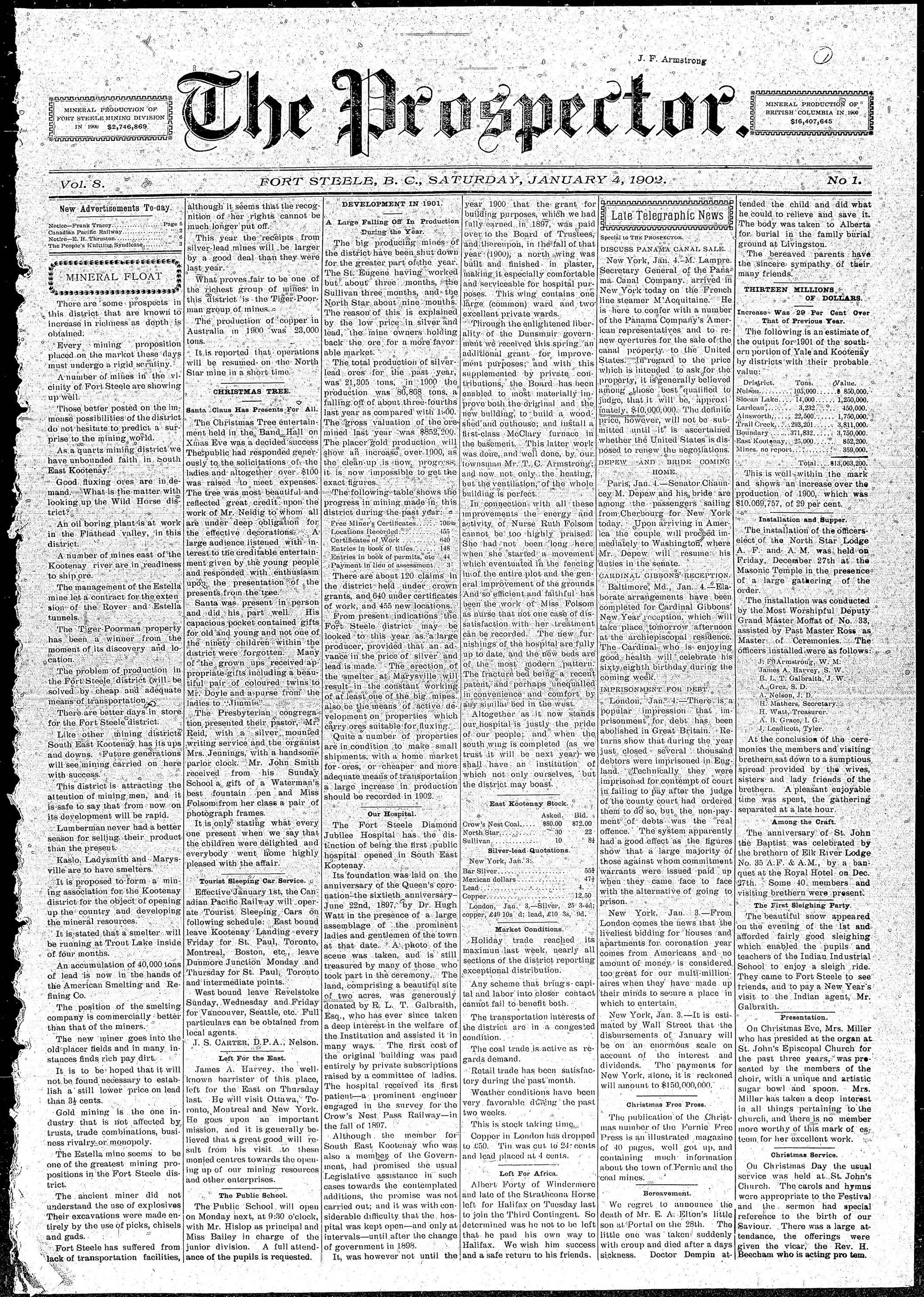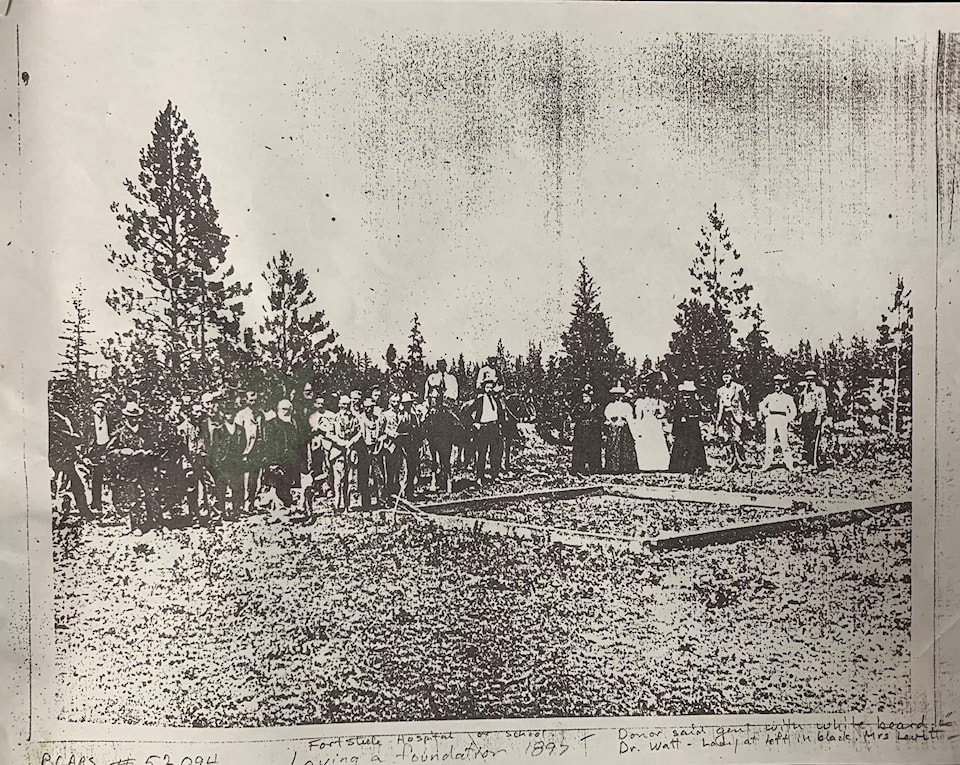A few days ago I was sorting through some files in an attempt to organize, when I came across a tattered envelope that looked extremely familiar.
Upon further inspection, I realized it was an important piece of historical evidence regarding the farm, that was given to me by the previous owners. I forgot that I had squirrelled these precious documents away among other more boring and mundane folders, like banking and medical forms.
As I have mentioned before in previous columns, the building that I rent and live in on the farm was built in 1897. It was the Fort Steele Diamond Jubilee Hospital, the first public hospital to be opened in South East Kootenay.
I thought I would share with you some of the interesting facts that can be found in these documents. Most of the pages are information transcribed from The Prospector newspaper, and nurses daily logs, both of which are currently housed in a museum in Victoria. In my research I ended up finding copies of ‘The Prospector’ on the UBC open library website.
“[The hospital’s] foundation was laid on the anniversary of the Queen’s coronation, 60 years earlier, June 22nd 1897, by Dr. Hugh Watt in the presence of a large assemblage of the town at that date…” reads the article from The Prospector, dated Saturday, January 4, 1902. “The land, comprising a beautiful site of two acres, was generously donated by R.L.T Galbraith Esq., who has ever since taken a deep interest in the welfare of the institution and assisted it in many ways.
“The first cost of the original building was paid entirely by private subscriptions raised by a committee of ladies. The hospital received its first patient, a prominent engineer engaged in the survey for the Crow’s Nest Pass Railway, in the fall of 1897.”
A separate document states that this patient was visiting the hospital because of a fever.
“Fort Steele Hosp. received its first patient on Saturday last. It is a fever case and the patient is already making rapid progress toward recovery,” reads the log, dated November 13, 1897.
The logs show that patients who couldn’t pay their fees were put in jail. There was also some contention around the expansion of the hospital and the budget in general. The doctor wasn’t being paid and the government’s solution was to transfer (or steal) him and bring him to Cranbrook. They were unsuccessful. Dr. Watt was due to be paid $48 for 48 days of work. According to one document, the total hospital debt one year after it was built was $185.70. The cost of the building was a total of $986.84, including furniture and general expenses such as medicine.
“The expenditures of the Fort Steele Hospital have been met so far by private subscription. They are now out of funds. Patients who could not pay were turned over to the Govt. who had to put patients in jail,” reads the log. “It would be better to have the payments (which would keep the patients in jail) made in the shape of a grant to the hospital. A new wing would be needed - the Govt. should be asked to provide $1,000 for the wing and $1,500 for hospital maintenance.”
Today, our house has two bedrooms, a bathroom, living/dining room, kitchen and an enclosed sunroom. It has been renovated many times since it ceased to be a hospital, including the extensive renovations we did when we first moved in. We tore out two layers of kitchen flooring and to our delight, we found the original fir hardwood that would have been walked on by the medical staff and their patients. We refinished the floors and although they have their quirks, it was so worth it to uncover this piece of history.
Our coffee maker sits under the old chimney in the kitchen. The fireplace has been removed but the chimney is still there, sticking out from the ceiling. It is now a Pinterest-worthy shelving feature. Sometimes when I am making my coffee in the morning I think about nurses and patients sitting by the fireplace, perhaps drinking coffee or tea as well.
As stated in the documents, the bedrooms were actually two, private rooms in the hospital and the sunroom was the waiting room.
“In the fall of 1900, a north wing was built and finished in plaster, making it especially comfortable and serviceable. This wing contains one large common ward and two excellent private wards,” reads The Prospector dated in 1902.
These old newspapers and documents are so interesting to me. It’s so wild to think that where I lay my head to rest at night, so many other people have. Some, perhaps, in poor condition. The logs state that some of the patients were general public, who would have been living in Fort Steele, while some were engineers and miners working in the area.
People often ask E and I if the house is haunted. I don’t know that it’s haunted, per say, but I do know that there there is energy in those walls and creaky old floors. I can picture nurses running about, tending to their patients, laughing with one another as they ready their supplies. I can picture men in suits and top hats, or dusty, dirty work clothes, reluctantly waiting for care. I can picture one nurse in particular, sitting down at the end of the day to write these logs.
It’s just further proof that we’re all connected in some way. History lives on and I’m so thankful to all of the historians and museum staff who spend hours upon hours documenting these items. I’m beginning to think that I should be keeping more hard copies of my farm life columns, for one day they may be an important piece of documentation from this land, too.

